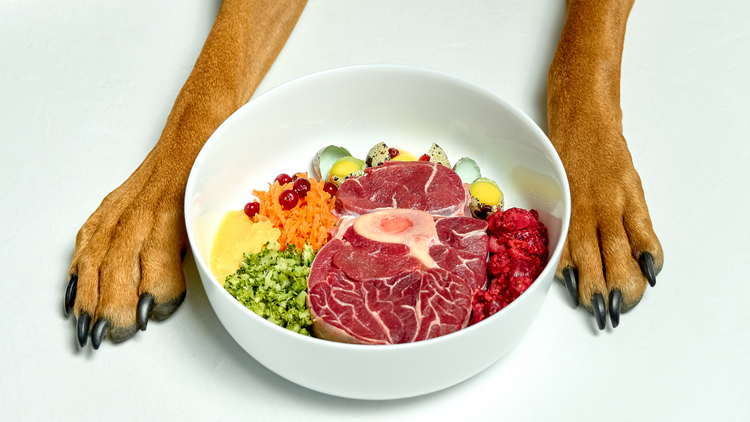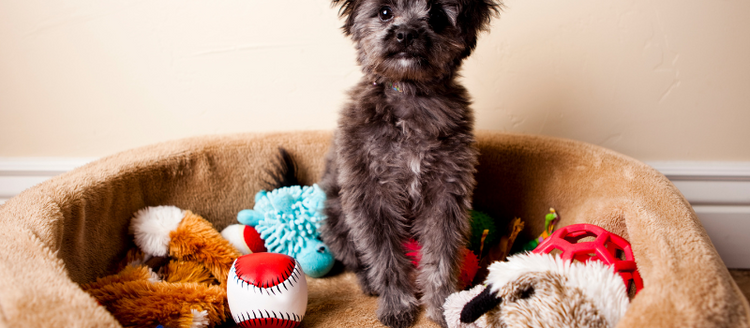Learning how to provide your dog with the best possible diet can be overwhelming and confusing, which is why we've done the legwork for you by compiling a beginner's guide to feeding your dogs a raw food diet.

3 Key Benefits of Feeding Raw
1. Nutrition
Feeding a raw food diet can offer a rich nutritional profile that promotes healthier skin, coat, teeth, eyes and ears, as well as better digestion – which means less poop! It can also improve their overall well-being, increasing energy levels and improving heart health.
2. Cost
Though feeding raw can initially seem more expensive, the overall cost of doing so may end up being comparable to or even lower than feeding kibble on a long-term basis. The improved health of your dogs from a raw food diet can mean fewer expensive vet visits in the future and less money spent on daily meal toppers and treats.
3. Ingredients
When you feed raw, you know exactly what your dog is consuming and can be sure that their diet isn't filled with unhealthy fillers.
Learn more about the benefits of feeding your dog a raw diet here.
Quick Tips for a Balanced Raw Diet
Tip #1: Look for a premade raw containing around 70% lean muscle meat + 10% organ + 10% bone + 10% greens.
Tip #2: Once your dog is used to eating a raw diet, begin to rotate the proteins and organs that you offer to introduce a greater variety of nutrients and a balanced nutritional profile.
Tip #3: Follow the recommended raw feeding portion guidelines. Adult dogs should be fed 100g-150g per 10lb of their body weight per day. Puppies should be fed 250g per 10lbs of their body weight per day. These are only suggested guidelines – visual and physical check-ins should be done regularly to assess if your dog is at a healthy weight.
Read our Raw Feeding Guide to learn more about what to feed, how much, and cost approximations.
Raw Bones
Raw bones are a beneficial and affordable addition to your dog’s diet, providing mental stimulation, a great source of calcium and a natural way for them to clean their teeth.
There are two categories of raw bones: Consumables and entertainment bones. Consumables are meatier bones like necks or whole carcasses that can be used as a meal replacement. Entertainment bones are typically less meaty, like knuckle or femur bones, and they are a great treat option that provides your dog with long-lasting mental stimulation.
Tips for feeding raw bones:
Tip #1: Choose the right size bone for your dog. A good rule of thumb is to make sure the bone is the same size or larger than your dog's mouth.
Tip #2: Put down a towel and tether your dog to an object nearby, or feed them outside for an easy clean-up.
Tip #3: Bones can be refrozen and reused up to three times, on average. To discourage bacteria growth, never leave bones outside of a fridge or freezer for more than three hours and ensure each surface is cleaned after being touched.
View our selection of raw bones here.
Making the Transition to Raw
Each life stage requires a different approach to beginning raw feeding, though it’s a fairly simple process for most.
For the majority of adult dogs, transitioning to a raw food diet is an easy process and can be done by introducing more raw food and less kibble each day over a one-to-two-week period.
For senior dogs and dogs with allergies or special health needs, the transition period might need more consideration. Learn more by watching our video, How to Transition to Raw.
Browse our raw food products online or visit us in-store to learn more.
For additional information, watch our raw feeding video series:


